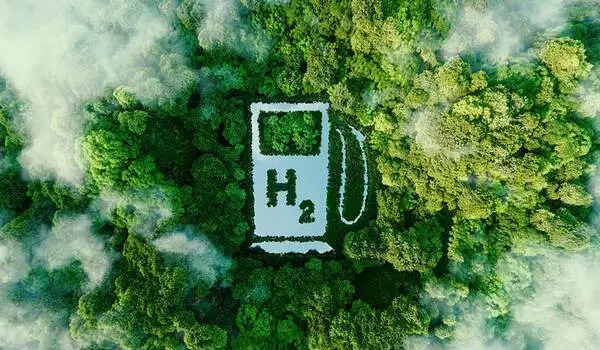The Indian Oil Corporation has partnered with Larsen & Toubro and ReNew Power to develop India’s nascent green hydrogen sector.
Three of India’s leading energy and engineering firms have formed a tripartite joint venture to supply green hydrogen on an industrial scale.
Indian Oil Corporation, a major refiner and fuel retailer, has partnered with Larsen & Toubro (L & T), an engineering and construction conglomerate, and ReNew Power, a leading renewable energy company, to develop India’s nascent green hydrogen sector.
Furthermore, IndianOil and L & T have signed a binding term sheet to form a joint venture (JV) with equity participation to manufacture and sell electrolyzers used in the production of green hydrogen.
According to SN Subrahmanyan, CEO and MD of L & T, India intends to continue its decarbonization efforts, and the production of green hydrogen is critical to this effort.
He stated that the JV will focus on developing projects that will supply green hydrogen on an industrial scale in a timely manner.
“L & T will bring strong EPC credentials to the table. IOC, as India’s premier oil refiner with extensive capabilities in chemical processes and refining, has established deep R & D capabilities in many aspects of the green hydrogen value chain, and ReNew Power has quickly established itself as a leading renewable energy supplier and has built a very strong reputation,” he said. “We see this collaboration as a significant step forward in India’s search for alternative energy.”
Both JVs aim to support the nation’s “Atmanirbhar Bharat” mission by rapidly building, expanding, and bringing in economies of scale to make green hydrogen a cost-effective energy carrier and chemical feedstock for many sectors. “
Shrikant Madhav Vaidya, Chairman of IndianOil, stated that the company is committed to accelerating India’s transition to carbon neutrality by leveraging the power of green hydrogen.
“IndianOil is forging this alliance to realise India’s green hydrogen aspirations, which is in sync with the Prime Minister’s vision of making India a Green Hydrogen generation and export hub,”
Shrikant Madhav Vaidya
IndianOil is forging this alliance to realize India’s green hydrogen aspirations, which are consistent with the Prime Minister’s vision of making India a green hydrogen generation and export hub, he said.
“To begin, this collaboration will concentrate on green hydrogen projects at our Mathura and Panipat refineries.” In addition, other green hydrogen projects in India will be evaluated. While the use of hydrogen in the transportation sector will take time, refineries will be the pivot around which India’s green hydrogen revolution will materialize in a significant way. As a result of today’s agreement, India’s energy basket will be greened. “
Sumant Sinha, Chairman and CEO of ReNew Power, stated that the company looks forward to working with L & T and IndianOil to build the green hydrogen business in India in accordance with the government’s broader strategic climate goals for 2030 and 2070.
“The timing for these proposed JVs is excellent because they will help support the government of India’s recently announced green hydrogen policy, which will accelerate India Inc.’s decarbonization journey,” he said.
The planned JVs aim to help India transition from a grey hydrogen economy to a greener economy that produces more hydrogen through electrolysis powered by renewable energy.

The central government announced the Green Hydrogen policy in February, with the goal of increasing production of green hydrogen and green ammonia to help the country become a global hub for the element’s environmentally friendly version.
Green hydrogen can also help provide critical energy security by reducing overall reliance on imported fossil fuels for countries like India, which has an ever-increasing oil and gas import bill.
While nearly all the hydrogen produced in India today is grey, it is estimated that demand for hydrogen will be 12 MMT by 2030, with approximately 40% of the element produced in the country (approximately 5 MMT) being green, according to the draft National Hydrogen Mission guidelines.
By 2050, nearly 80% of India’s hydrogen is expected to be “green,” meaning produced using renewable electricity and electrolysis. Green hydrogen could become the most cost-effective method of producing hydrogen by 2030. This could be influenced by potential cost reductions in key manufacturing technologies as well as clean energy technologies such as solar PV and wind turbines.
Today, hydrogen is primarily used in the refining, steel, and fertilizer industries, which will be the initial focus of the JVs’ efforts. Every year, the country’s refining sector consumes approximately 2 MMT of grey hydrogen, with IndianOil accounting for a sizable portion of that output.





